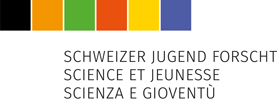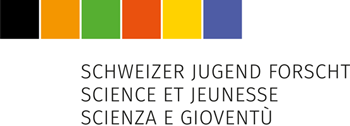Physique | Technique
Luz Sanchez-Real Zielniewicz, 2004 | Onex, GE
The blue phenomenon, in other words blue-colored ice, takes place when ice crystals don’t absorb blue light waves, reflecting them back at the observer. In this research, I focused on the impact of temperature and growth rate of ice crystals on their O-H bonds and light absorption, in order to explain the process behind the blue phenomenon. This was done by using optical spectrometry in a cold room, as well as microscopical analysis.
According to literature, the strength of an O-H bond in ice is affected by the growth rate of its crystals. In addition, it is the strength of that bond that determines its ability to absorb particular light waves. I thus created my own ice crystals under differing conditions, analyzing their absorption spectra in the visible range. A threshold temperature was found at -26°C: ice grown at this temperature or below showed a peculiarity in reflecting more blue waves and increasingly absorbing the red end of the spectrum. In addition, ice cooled down gradually from a temperature of -2°C to a temperature of -32°C also had a similar threshold, but “later” on at -30°C. This seemed to support the idea that the bonds needed a specific energy in order to reflect blue light.
Problématique
Nowadays, the constant threat of global warming has led to serious glacier melting, a risk to humanity. Finding out what factors affect the light absorption of ice might help us understand what factors affect its infrared absorption, which is what ultimately causes glacier melting.
Méthodologie
Using optical spectrometry inside a cold room, I investigated the effect of temperature on the crystallization of ice and its absorption/reflection spectra. The optical spectrometer was used with 2 different functions: recording the absorption spectrum of ice when subject to white light and the reflection when subject to monochromatic light of 435nm. The cold room enabled me to reduce uncertainty on all measurements as temperature was monitored closely; in addition, it also minimized melting of the ice when used inside the spectrometer.
Stage 1: Ice blocks (identical dimensions) created in a cooling chamber at specific temperatures: the coldest ice block crystallized at -32°C, the warmest at -2°C. Once each block of ice was solid, I recorded its absorption spectrum of white light and its reflection of blue light
Stage 2: Same experiments done with an ice block which started off at a temperature of -2°C, but was then gradually cooled down at different rates until it reached -32°C
Stage 3: Instead of using initial water at ambient temperature, the water was boiled to a temperature of 97°C and 50°C, and was cooled down gradually, just like stage 2
Résultats
1: ice grown at -26°C differed greatly from ice grown at -25°C. Whereas warm ice absorbed most visible wavelengths almost equally, there was a gradual decrease in absorption of blue wavelengths as the temperature of creation of the ice block decreased. However, at the “threshold temperature” of -26°C, we could notice a massive decrease in absorption of blue light, hinting at an important change on the atomic level
2: absorption increased less rapidly and the «threshold» from stage 1 was observed later on (-30°C)
3: the ice cube created from water initially at 97°C followed a similar pattern to water from stage 1. Water initially at 50°C less so, but still significantly more than in stage 2.
Discussion
Results seem to suggest that the absorption of light is dependent on the rate of growth of the ice crystals. Crystals that were grown quickly at a specific temperature had a higher ability to absorb light than ice that had been cooled down over a long period of time. Hence, the faster the crystals were grown, the better their absorption abilities. In stage 3, using hot water would mean that the temperature difference between the outer part of the water and the center would be greater, leading to higher mechanical stress in the resulting ice.
Conclusions
Ice cooled down gradually over a longer period of time has more time to adapt, but also more time to lose some of its energy. Hence, in order to absorb light, a bond must have sufficient energy (which it acquires with decreasing temperature and from its initial state). The reason behind the “threshold” temperature could perhaps be the fact that when the ice crystals reach -26°C, most of their vibrational frequency is sufficient for absorption. It takes more time for a gradually decreasing ice block since it takes time for all particles to reach that specific energy, something which happens faster when all bonds are directly subject to this energy when under creation.
Appréciation de l’expert
Félix Musil
La candidate développe une approche expérimentale originale dans un travail de recherche convaincant. Elle met en perspective les différentes échelles spatiales du problème afin d’expliquer l’origine moléculaire du phénomène et certains facteurs macroscopiques qui influencent son apparition à l’aide d’une étude bibliographique solide et d’un protocole expérimental original. La réalisation et l’interprétation des résultats de ses expériences font la preuve d’une démarche scientifique et personnelle malgré quelques imperfections.
Mention:
très bien
La Grande Boissière, Genève
Enseignant: Matthew Jennings



